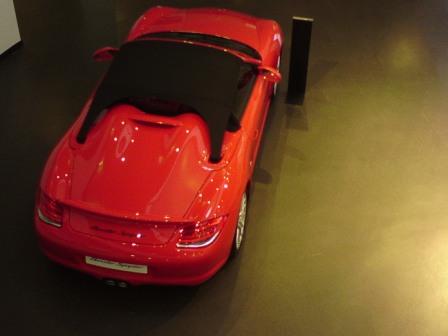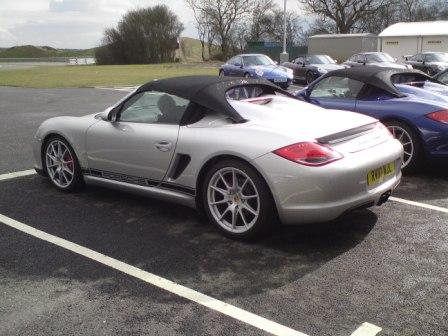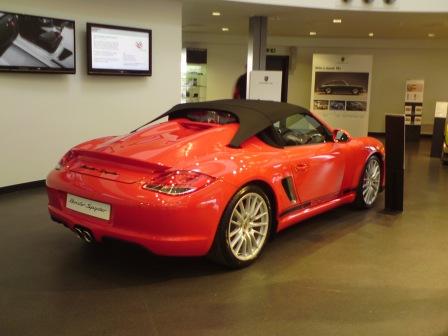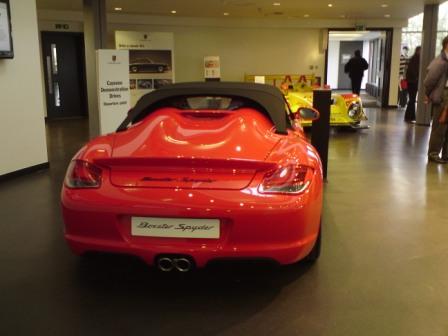Had a 45 minute test drive, on my chosen routes today, and can happily report back that the new Spyder has taken everything the regular Boxster S does so brilliantly and then adds some extra spice to the entire driver experience.
Grip / Handling absolutely stunning and even though the ride is firmer it is certainly not what I would class as hard-core at all and definitely more than acceptable for my preferences which to date have always been standard set up with 18" wheels
Performance extremely lively from tickover to max revs and in a totally different league to my current 280bhp 3.2S bearing in mind the Spyder was 150 miles on speedo, 2 up & test driver said he weighed 90kg, had 3/4 of a tank of fuel onboard so a fully run in example with just my 70kg for company should feel even more lively if you believe all the less weight etc hype [ ][
][ ]
]
When I climbed back into my car solo and with under 6 litres of fuel left in the tank it made me ponder why did my more than adequate 3.2 all of a sudden feel quite lifeless! [ ] I kid you not
] I kid you not
Short shift gearchange and sports exhaust are two must have options IMO and I was pleasantly surprised by the great tone from the PSE system even when switched off! never thought I would say that being a sports exhaust enthusiast
Carbon racing buckets (a big concern) proved to be as good as they look and definitely the way to go
Before we started the drive I can confirm we removed the roof(s) and stowed them neatly easily in under 2 minutes from start to finish
Conclusion:- To date this is definitely the most fun I have ever experienced in 13 years of Boxster ownership and now eagerly look forward to my Spyder Silverstone experience next week where I can hopefully see many different colour combo's in the flesh [ ]
]
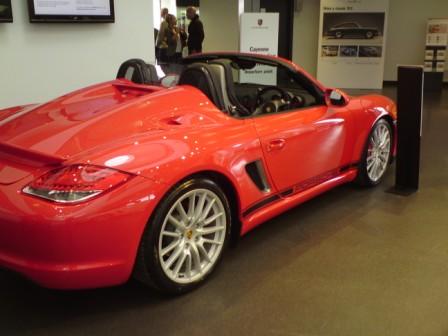
Grip / Handling absolutely stunning and even though the ride is firmer it is certainly not what I would class as hard-core at all and definitely more than acceptable for my preferences which to date have always been standard set up with 18" wheels
Performance extremely lively from tickover to max revs and in a totally different league to my current 280bhp 3.2S bearing in mind the Spyder was 150 miles on speedo, 2 up & test driver said he weighed 90kg, had 3/4 of a tank of fuel onboard so a fully run in example with just my 70kg for company should feel even more lively if you believe all the less weight etc hype [
When I climbed back into my car solo and with under 6 litres of fuel left in the tank it made me ponder why did my more than adequate 3.2 all of a sudden feel quite lifeless! [
Short shift gearchange and sports exhaust are two must have options IMO and I was pleasantly surprised by the great tone from the PSE system even when switched off! never thought I would say that being a sports exhaust enthusiast
Carbon racing buckets (a big concern) proved to be as good as they look and definitely the way to go
Before we started the drive I can confirm we removed the roof(s) and stowed them neatly easily in under 2 minutes from start to finish
Conclusion:- To date this is definitely the most fun I have ever experienced in 13 years of Boxster ownership and now eagerly look forward to my Spyder Silverstone experience next week where I can hopefully see many different colour combo's in the flesh [



